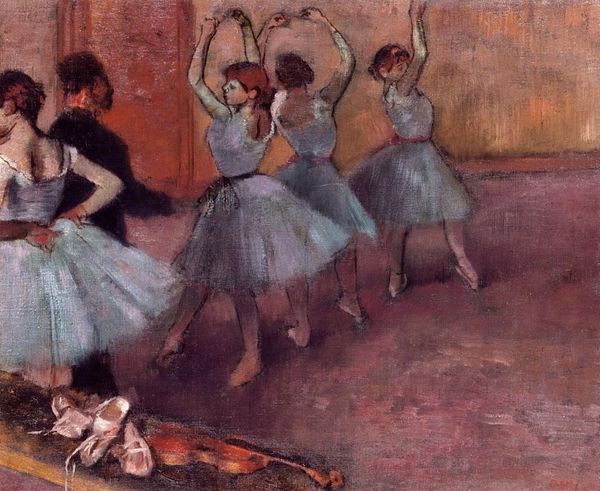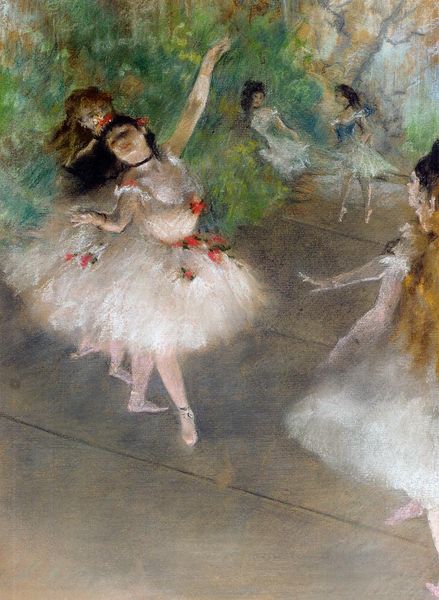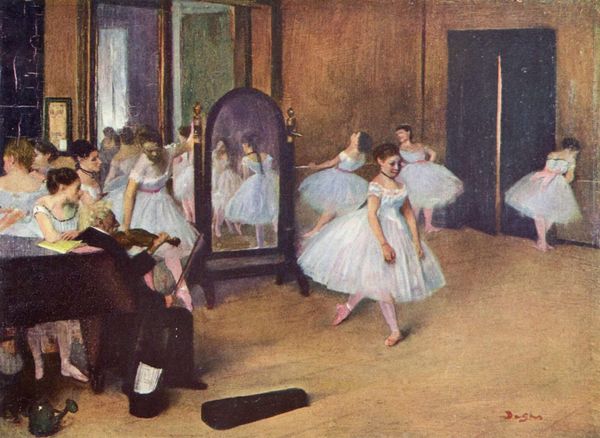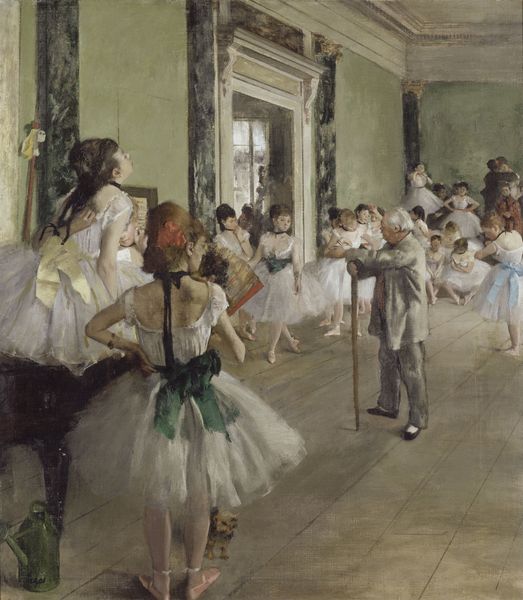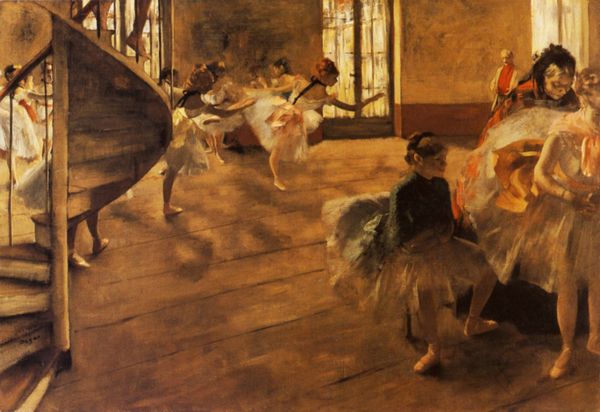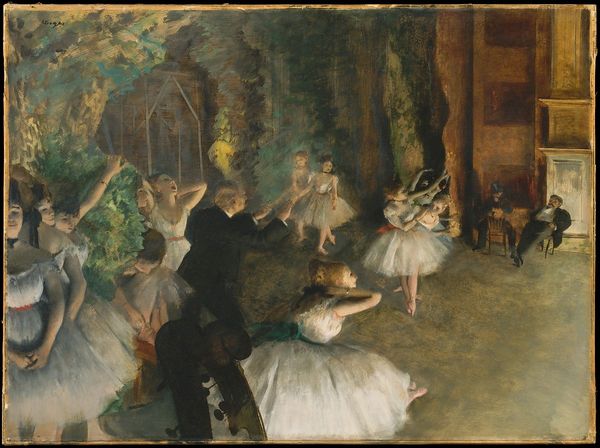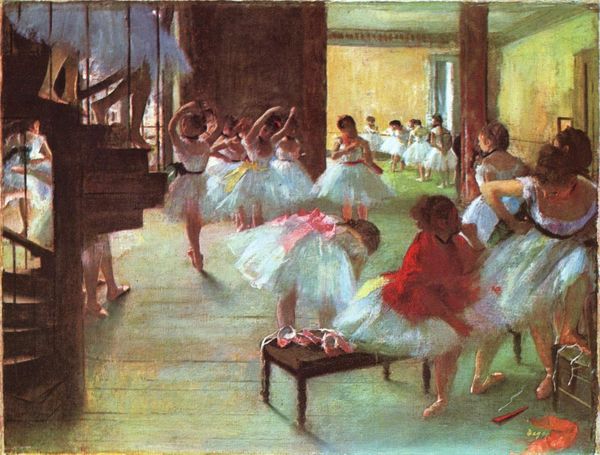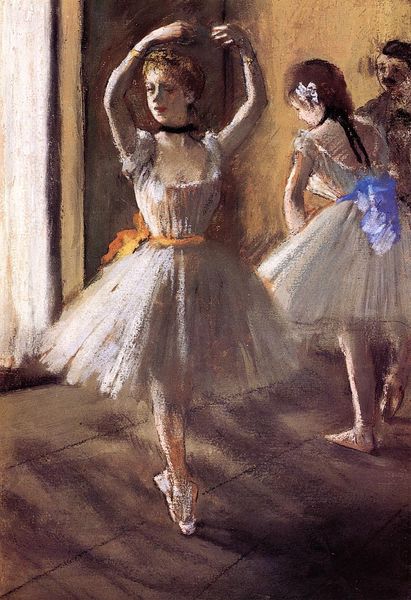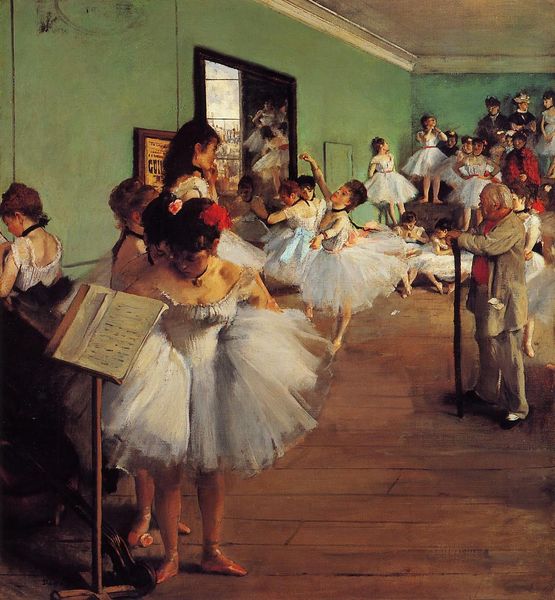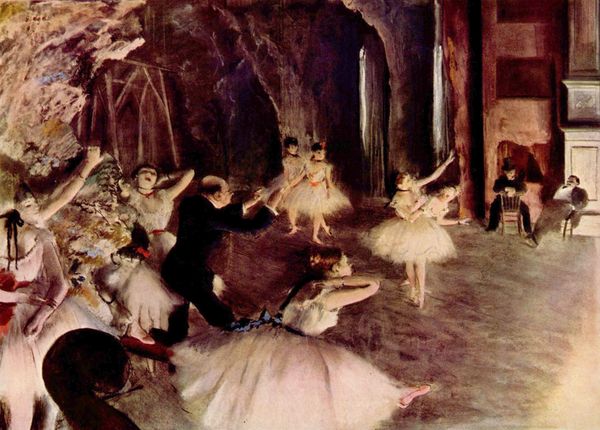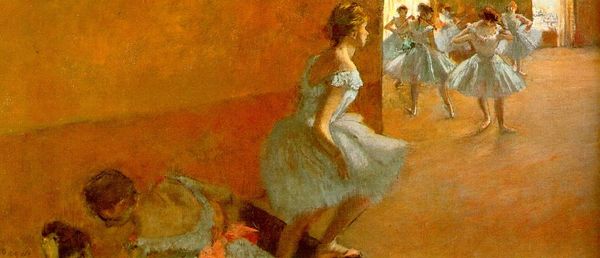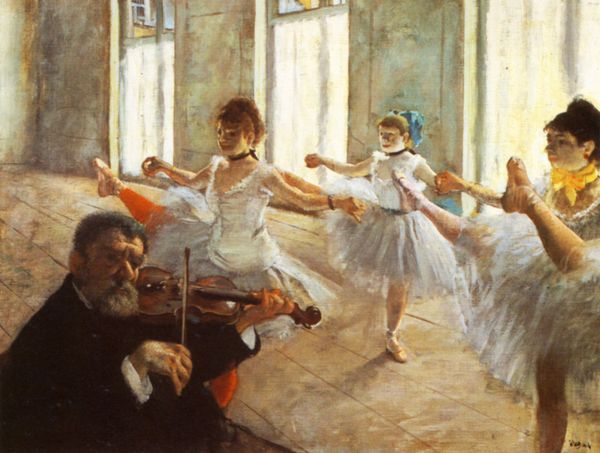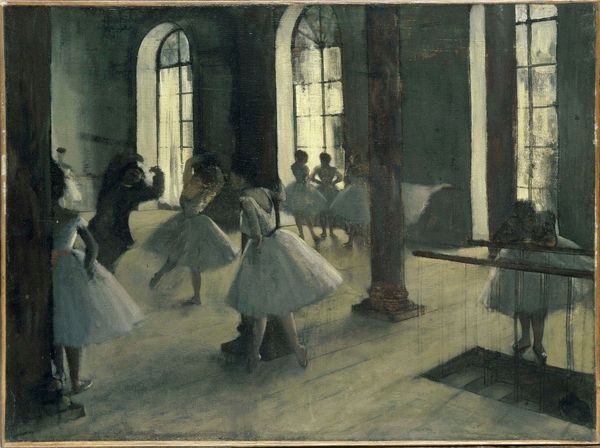
#
automotive concept
#
green emphasis
#
green tone
#
culture event photography
#
green background
#
underpainting
#
green
#
green and neutral
#
3d art
#
warm toned green
Copyright: Public domain
Curator: This is Edgar Degas’ “Dance Class at the Opera, rue Le Peletier," painted in 1872. Editor: My first thought is how unexpectedly asymmetrical the composition feels. The seemingly casual placement of the dancers, the mirror's reflections... it avoids the rigid structure you might expect of such a scene. Curator: Indeed. Degas wasn’t merely capturing a rehearsal, but rather, reflecting on the grueling discipline of ballet through symbols. Note the exhausted ballerina seated near the center. Editor: Yes, her bowed head juxtaposed with the others in perfect form underscores the physical and mental demands. I'm drawn to how Degas handles the light – diffuse, almost atmospheric. It softens the edges, preventing it from becoming a clinical, academic exercise. Curator: Absolutely. And consider the historical context. The opera house itself, though majestic, also held societal hierarchies. Ballet offered a chance for young women, often from modest backgrounds, to perhaps ascend the social ladder, albeit one rife with challenges and constraints. Their tutus, ethereal as they are, veil this stark reality. Editor: I see your point about social commentary, but the focus on visual dynamics is undeniably the stronger aspect. The way the receding planes of the room create depth, how the pale hues of the costumes play against the warm tones of the walls – it is all masterfully constructed. He is not creating perfect realism but exploring what painting can do with representation. Curator: A vital observation. Beyond the compositional elements, the image taps into deeply ingrained archetypes: the maiden, the mentor, the scrutinizing gaze. Degas’ work reminds us of our continuing engagement with similar narrative patterns. It is cultural memory unfolding before us. Editor: I can certainly appreciate the undercurrent of symbolism. Still, I believe that the painting transcends a purely narrative interpretation through its brilliant formal execution. Degas transforms a potentially mundane subject into a visually compelling arrangement of light, line, and form. Curator: I appreciate you noting how Degas elevates an ordinary event into something timeless through his use of colors and figures. The way he uses those soft greens and golds to invoke an age. Editor: And seeing it all now, through both our interpretations, I can truly grasp Degas' mastery of both visual structure and embedded symbolism. Thank you for opening it up to me!
Comments
No comments
Be the first to comment and join the conversation on the ultimate creative platform.
